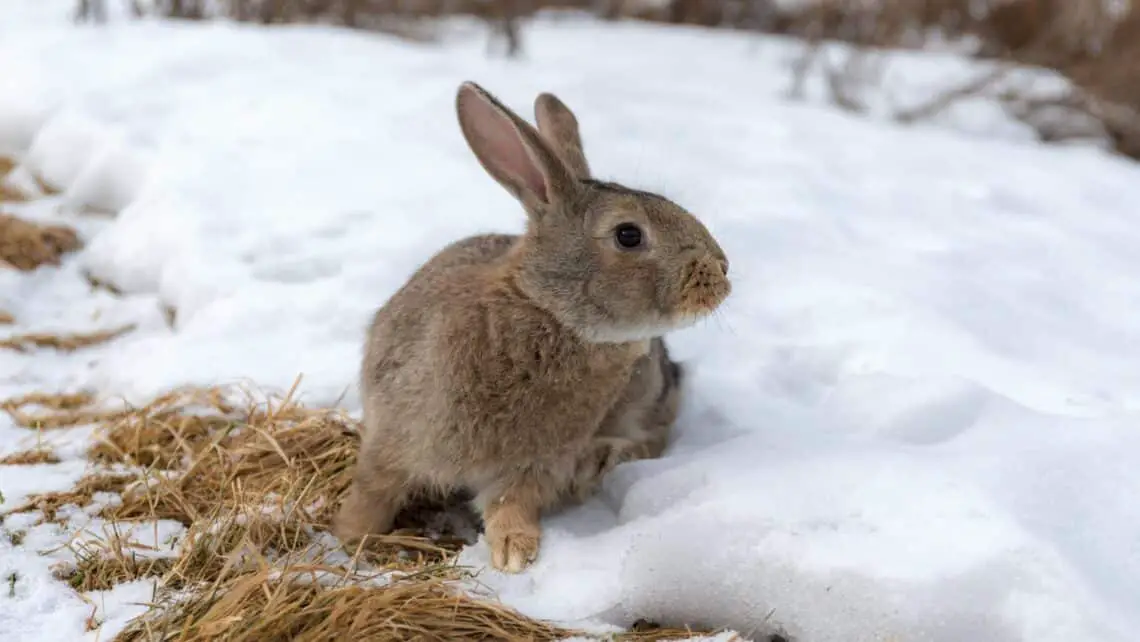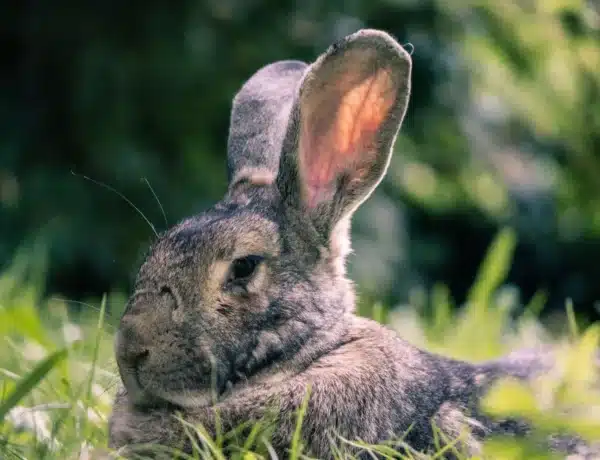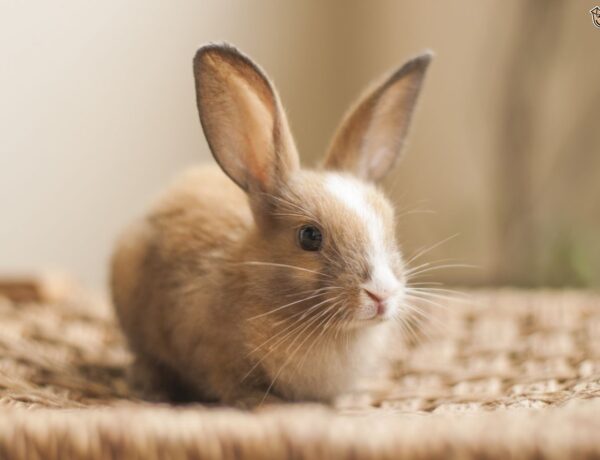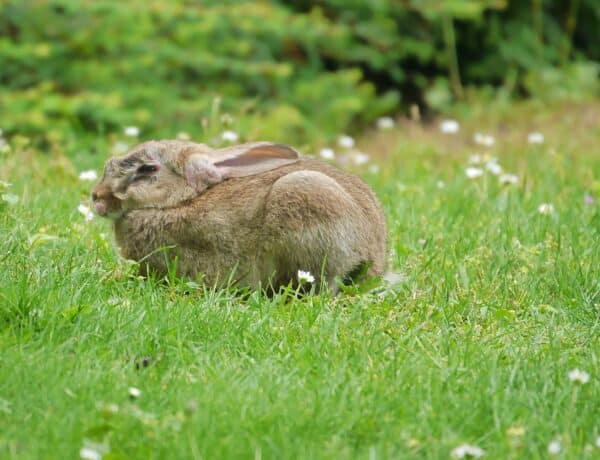Introduction
What Do Rabbits Eat In The Winter: As the winter season blankets the landscape with snow and chills the air, many creatures in the animal kingdom face the challenge of finding food to sustain themselves through the harsh conditions. Among these resilient creatures are rabbits, small mammals known for their adaptability and resourcefulness. In this exploration of their dietary habits during the winter months, we will delve into the fascinating world of what rabbits noise eat in the winter. From their natural foraging instincts to the strategies they employ to survive the cold, this article will shed light on the essential role food plays in the lives of these fluffy, winter-loving creatures. So, join us on this journey as we uncover the secrets of rabbit nutrition in the frigid days of winter. In the unforgiving embrace of winter, rabbits face a series of challenges, chief among them being the scarcity of their preferred fresh, green vegetation.
This necessitates a unique approach to their diet during this season. Rabbits are herbivores, primarily consuming plants, leaves, stems, and grasses. However, when the ground is blanketed in snow and the landscape appears barren, their food sources dwindle. To compensate for this scarcity, rabbits employ a combination of dietary adaptations and behavioral strategies. These remarkable creatures are not only adept at finding hidden food sources but also possess the ability to extract nutrients from seemingly unpalatable options. In this article, we will delve into the dietary choices of rabbits in winter, exploring the types of foods they rely on, their clever foraging techniques, and the critical role these adaptations play in their survival.
So, as we journey deeper into the world of winter nutrition for rabbits, we will gain a deeper appreciation for their ability to thrive even in the harshest of conditions. The winter landscape presents rabbits with a unique set of dietary challenges. Their usual sources of fresh greens, such as clover, grass, and dandelions, are buried beneath layers of snow and ice. However, rabbits have evolved to adapt to these adverse conditions, making use of whatever sustenance they can find. One of the mainstays of a rabbit’s winter diet is the bark and twigs of trees and shrubs. These woody materials may lack the moisture and nutritional content of their preferred greens, but they provide a crucial source of fiber and sustenance when other options are scarce. Rabbits are well-equipped to gnaw through the outer layers of bark to access the inner, nutrient-rich cambium layer.

Should you feed rabbits in the winter?
In the winter months, a rabbit still needs unlimited hay and rabbit safe greens. However, in order to keep your rabbits warm, you should feed them a bit more in the colder months. Many wild animals eat more when winter is coming on.
Rabbits, in the wild or domesticated, have a natural ability to forage for food even in winter. They can nibble on twigs, tree bark, dried grasses, and other vegetation to meet their dietary needs. In many cases, they can thrive without human intervention. However, factors like extreme cold, limited access to natural forage, or illness can necessitate supplementary feeding.
Before deciding to feed rabbits during the winter, assess the local environment and the condition of the rabbits. If natural forage is scarce due to heavy snowfall or extreme cold, providing supplementary food may be necessary to prevent starvation.
If you choose to feed rabbits in the winter, select appropriate foods. Hay, especially high-fiber varieties like Timothy hay, is a suitable option. Pelleted rabbit food can also be offered in moderation. Avoid foods high in starch, sugar, or high-calcium vegetables, as these can lead to health issues.
If you’re considering feeding wild rabbits, be mindful of the potential impact on local wildlife. Providing food can attract other animals, so choose an appropriate location and use feeders designed to minimize access by non-target species.
How do rabbits survive the winter?
Harsh winters and extreme cold are dangerous to any animal, including rabbits. To escape the cold and keep warm, rabbits often find shelter in underground dens they have lined with grass, straw, and twigs for insulation. When spring and summer return, rabbits will go back to eating their usual food source.
One of the most visible adaptations is their thick fur coat. Rabbits have dense fur that provides insulation against the cold. The fur traps air close to their bodies, creating a layer of warmth. This fur coat also changes in thickness with the seasons, becoming thicker in the winter to provide better insulation.
Rabbits are crepuscular, meaning they are most active during dawn and dusk. During winter, they may adjust their activity patterns to take advantage of the slightly warmer temperatures and reduced predation risks during these times. They conserve energy during the coldest parts of the day by remaining hidden and less active.
Many rabbit species are adept burrowers, creating intricate tunnel systems underground. These burrows serve as natural insulation from the cold and offer protection from predators. Inside the burrows, the temperature remains relatively stable, providing a refuge from the harsh winter conditions.
Rabbits are herbivores, and they rely on vegetation for their diet. To ensure a food source during winter, they often engage in food caching. This behavior involves storing excess food during the warmer months in hidden locations, such as their burrows, to have a reserve of sustenance when foraging becomes challenging.
What do domestic rabbits eat in winter?
Good quality, sweet-smelling hay should make up the majority of your rabbits’ diet and should be available at all times. In winter your rabbits are likely to have less opportunity to forage in the garden for grass and leafy greens, so it is important to provide safe, fresh leafy greens every day.
Hay is a staple of a domestic rabbit’s diet year-round, including winter. High-fiber varieties like Timothy hay, Orchard grass hay, and Meadow hay are excellent choices. Hay provides essential fiber for digestion and helps maintain dental health. During winter, it becomes even more critical as it serves as a primary source of sustenance when fresh greens are limited.
Rabbit pellets can be part of a balanced diet, but they should be fed in moderation. Look for high-quality rabbit pellets that are specifically formulated for your rabbit’s age and size. Pellets provide essential nutrients but should not be the mainstay of their diet. Limit the daily pellet intake, especially for adult rabbits.
Despite the challenges of winter, fresh vegetables should still be a part of your rabbit’s diet. Leafy greens like romaine lettuce, kale, spinach, and parsley can be offered in small quantities. However, be cautious with high-calcium vegetables like broccoli and collard greens, as excessive calcium can lead to health issues.
Winter root vegetables like carrots, radishes, and beets can be given to rabbits as occasional treats. These provide extra nutrients and help keep their diet varied. Ensure that root vegetables are clean, fresh, and free of pesticides.
Do rabbits stop eating when cold?
Feeding your rabbit in cold temperatures
Rabbits will need more food to keep themselves warm in freezing temperatures. Provide plenty of hay, a portion of fresh vegetables and a small amount of high-quality pellets to ensure they have enough to eat. If you’re unsure how much they’ll need, ask your vet for advice.
Rabbits are crepuscular animals, meaning they are most active during dawn and dusk. In colder weather, particularly during extreme cold spells, rabbits may become less active and more inclined to conserve energy by resting. This can lead to a reduced appetite, and they may eat less compared to milder seasons. It’s essential to monitor their food intake to ensure they’re still getting the nutrition they need.
Hay is a critical component of a rabbit’s diet year-round, but its importance becomes even more significant in the winter. As fresh greens become scarce, rabbits rely more on hay to meet their dietary needs. Hay provides essential fiber for digestion and helps keep their teeth healthy. Offer high-quality hay like Timothy hay or Orchard grass hay in ample quantities.
In colder weather, rabbits may become more selective in their food choices. They may prefer the tastiest and most nutrient-rich parts of their food, such as the leaves and tender stems of vegetables, while leaving behind the less appetizing parts. This selective eating behavior is a natural response to conserve energy and maximize nutrition.
In regions with snow cover, rabbits may resort to gnawing on the bark and woody parts of shrubs and trees. This behavior provides both nutrition and essential dental wear. Rabbits are skilled at stripping the outer bark to access the nutrient-rich cambium layer beneath.
What food do rabbits like?
Fresh, clean drinking water and good quality hay and grass should make up the majority of your rabbits’ diet. A rabbit’s digestive system needs hay or grass to function properly so a healthy supply is extremely important. You can supplement with leafy greens and a small amount of pellets.
High-quality hay is a staple of a rabbit’s diet. Rabbits love varieties like Timothy hay, Orchard grass hay, and Meadow hay. It provides essential fiber for digestion and helps maintain their dental health. Fresh hay is not only liked by rabbits but is also crucial for their overall well-being.
Rabbits have a fondness for leafy greens. Some favorites include romaine lettuce, kale, spinach, arugula, parsley, and cilantro. These greens are not only tasty but also provide essential vitamins and minerals. However, introduce new greens gradually to prevent digestive upset.
Carrots are a well-known favorite among rabbits. They love the sweet, crunchy texture of carrots. However, carrots are high in sugar and should be given in moderation as an occasional treat rather than a daily staple.
How do I know if my rabbit is cold?
Symptoms include shivering (although this will suddenly stop when their temperature reaches dangerously low levels), pale lips and gums, low energy and a loss of coordination. Hypothermia is an emergency, so if you spot any of these symptoms, bring them into the warm and contact your vet immediately.
Just like humans, rabbits may shiver or tremble when they’re cold. If you notice your rabbit’s body shaking or quivering, it’s a clear indication that they are feeling chilly.
A rabbit’s ears and nose are often the first areas to feel the cold. If you touch your rabbit’s ears and they are noticeably cold to the touch, it’s a sign that they may be experiencing discomfort due to the cold.
When rabbits are cold, they tend to adopt a hunched posture. They may tuck their legs under their body and appear more compact in an attempt to conserve body heat.
Cold rabbits may become less active. They might spend more time sitting still or huddled up in their enclosure instead of hopping around and exploring as usual.
How do I keep my rabbit warm at night?
When the temperature looks set to drop below zero, your rabbits may need the equivalent of a hot-water bottle for rabbits to help keep them warm at night. A small chew-proof heat pad (e.g. SnuggleSafe) is ideal for them to sit on, and simple to use.
Ensure your rabbit’s hutch or enclosure is well-insulated and weatherproof. It should protect them from drafts, rain, and snow. If possible, consider moving your rabbit’s hutch indoors or into a garage during extremely cold nights.
Line your rabbit’s hutch with plenty of dry bedding material, such as straw or hay. This provides insulation and helps keep them warm. Make sure bedding is clean and dry, as damp bedding can contribute to cold-related health issues.
Provide your rabbit with a nest box inside their hutch. This box should be lined with extra bedding to create a warm and snug space for your rabbit to retreat to at night.
Consider using a heated pad or heat lamp designed for small animals. Place these devices outside the hutch, ensuring they are out of your rabbit’s reach to prevent burns. Use thermostatically controlled heating devices to maintain a consistent and safe temperature. Make sure there is ample ventilation in the hutch to prevent the buildup of carbon monoxide from heating devices.
What veggies can rabbits eat daily?
“Carrots should be fed sparingly, as they are very high in carbohydrate and may upset GI bacterial flora.” Particularly good vegetables include the dark leafy greens like romaine lettuce, bok choy, mustard greens, carrot tops, cilantro, watercress, basil, kohlrabi, beet greens, broccoli greens, and cilantro.
Romaine lettuce is a rabbit favorite and a good source of fiber and vitamins. Another leafy green that rabbits enjoy, offering a variety of essential nutrients. Provides similar benefits to green leaf lettuce but with a slightly different taste.
Spinach is rich in vitamins and minerals and can be a regular part of a rabbit’s diet. However, it is high in oxalates, which can lead to calcium problems, so it should be fed in moderation.
Arugula is a peppery and flavorful leafy green that rabbits typically enjoy. It provides a variety of nutrients and can be given daily.
Mustard greens are a great source of vitamins A, C, and K, as well as fiber. They are suitable for daily consumption in small quantities.

Conclusion
In the depths of winter, when snow blankets the ground and vegetation becomes scarce, rabbits display their remarkable adaptability and resourcefulness in ensuring their survival. What rabbits winter reveals not only their dietary preferences but also their ability to navigate the challenges of a harsh season. These small herbivores may face a shortage of their preferred fresh greens, but they compensate by turning to alternative food sources. Bark, twigs, dried grasses, seed heads, and even buds of shrubs and trees become vital components of their winter diet. Their highly efficient digestive system allows them to extract essential nutrients from these seemingly less nutritious sources.
Moreover, rabbits’ foraging behavior, including the creation of rabbit runs in the snow, showcases their ingenuity in conserving energy while seeking out food. Their adaptability and resilience in the face of adversity are nothing short of impressive. It reminds us of the remarkable ways in which nature equips creatures to endure even the most challenging of seasons. As we appreciate their ability to thrive in harsh conditions, we gain a deeper admiration for the enduring spirit of rabbits and their vital role in the ecosystem.
Rabbits, with their unique dietary adaptations and foraging techniques during the winter, exemplify nature’s ingenious solutions to survival challenges. Their ability to make the most of limited food resources, such as bark and woody materials, reflects their resilience in the face of adversity. Their skillful utilization of rabbit runs and other behavioral strategies underscores their resourcefulness. As we delve into the complexities of their winter diet, we gain a deeper appreciation for the interconnected web of life, where every species, no matter its size, plays a vital role in maintaining the ecological equilibrium.





No Comments